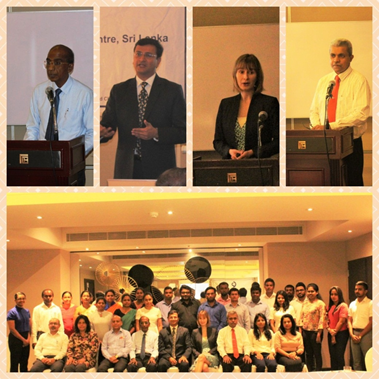 Sri Lanka experienced a wave of Green Chemistry knowledge through an intensive Workshop organised under the aegis of “Global Green Chemistry Initiative (GGCI)” led by the United Nations Industrial Development Organization (UNIDO) in partnership with the Centre for Green Chemistry and Green Engineering at Yale University, USA.
Sri Lanka experienced a wave of Green Chemistry knowledge through an intensive Workshop organised under the aegis of “Global Green Chemistry Initiative (GGCI)” led by the United Nations Industrial Development Organization (UNIDO) in partnership with the Centre for Green Chemistry and Green Engineering at Yale University, USA.
Green ChemisTree Foundation is honoured to have received the opportunity of conducting this Workshop, as led by Mr. Nitesh Mehta, Co- Founder and Director of Green ChemisTree Foundation and assisted by Ms. Karolina Mellor, Project Manager at Centre for Green Chemistry and Green Engineering at Yale University. The Workshop was hosted by the National Cleaner Production Centre (NCPC), Sri Lanka, under the dynamic leadership of Mr. Mr. Gamini Gunasekera, Chairman, NCPC; Mr. Samantha Kumarasena, CEO, NCPC; and their enthusiastic team at NCPC.
This intensive facilitators’ training initiative was attended by a diverse group of senior representatives from Academia, Industry, Govt. bodies, Institute of Ceylon; and Gujarat Cleaner Production Centre.
The workshop covered all depths of green chemistry right from its role in sustainable development to green chemistry principles and their industrial implementation. The workshop gave the participants an insight into various concepts like Life Cycle Assessments, GC&E tools, techniques and metrics, etc. The content for the Workshop was designed by Center for Green Chemistry & Green Engineering at Yale, and incorporated relevant topics such as toxicity, catalysis, solvent and its impact on process greenness, green solvents, industrial ecology, use of renewable resources, etc.
The five day intensive workshop triggered the understanding and the necessity of implementing green chemistry, making way for ideas from diverse sectors that participated. The participants from academia started to think in the direction of initiating a dedicated course on Green Chemistry, while Govt. bodies flagged an idea of Sri Lanka to become a “green-knowledge-economy” driven country. Industrial participants shared as to how the workshop have opened up them to various tools and techniques for working towards developing green products and processes. The key outcome from this deliberation has been the start of pro-active dialogue amongst diverse stakeholders to come together for collectively working towards creating sustainable development through Green Chemistry implementation in Sri Lanka.

